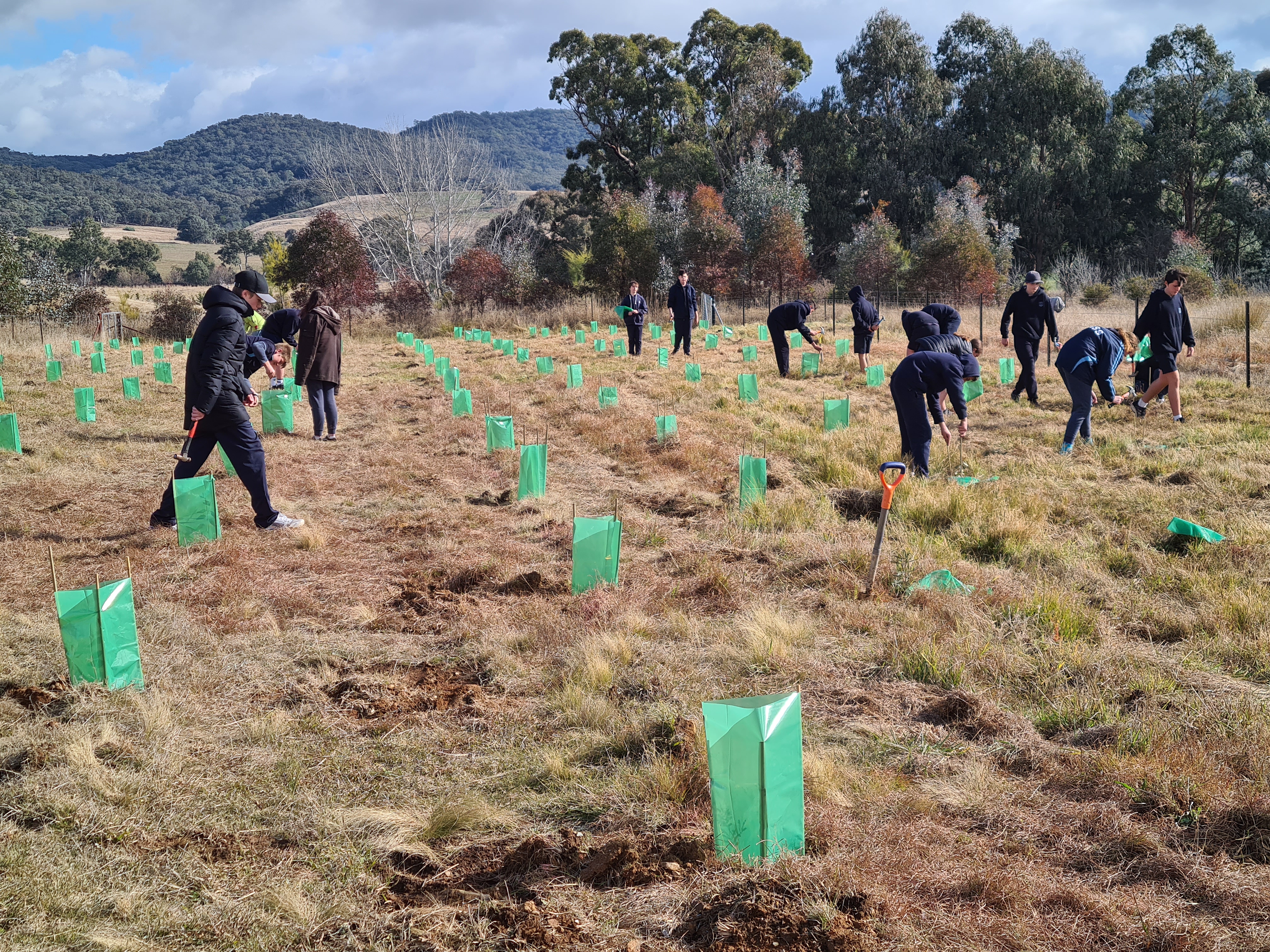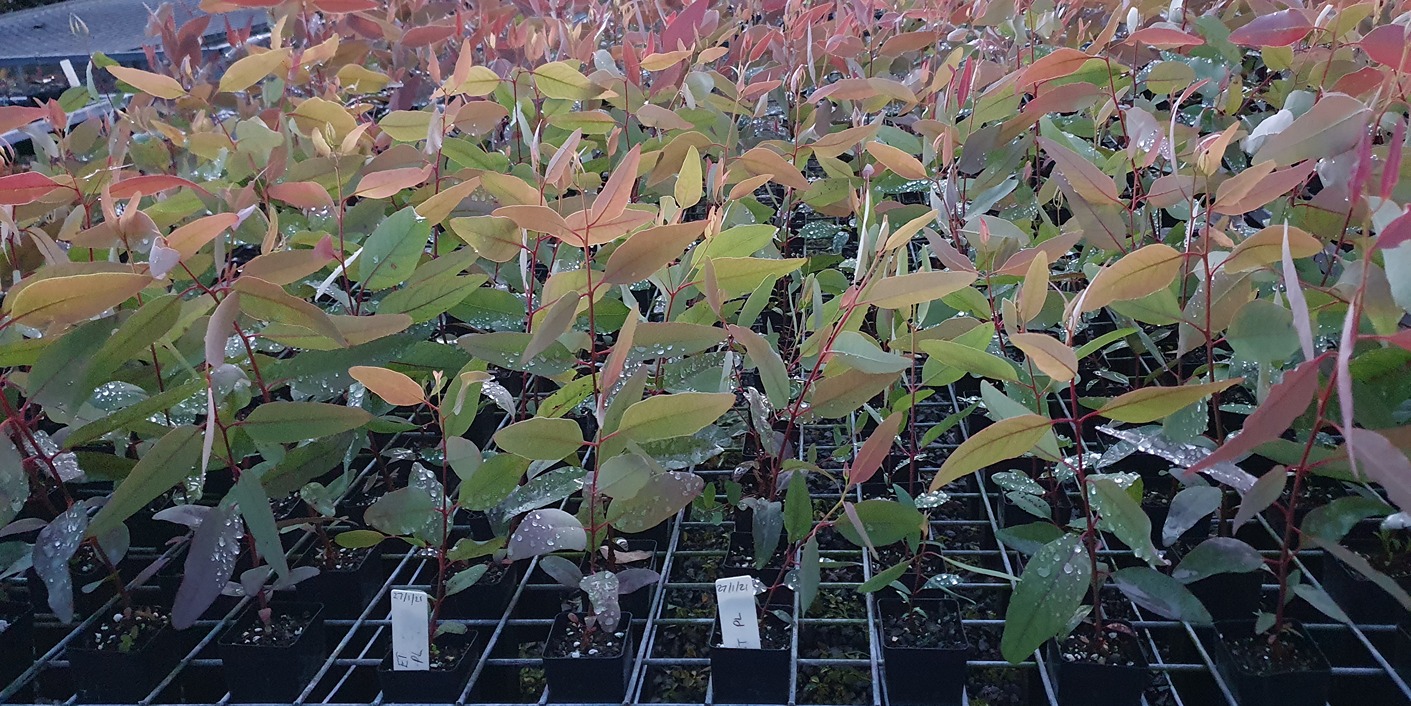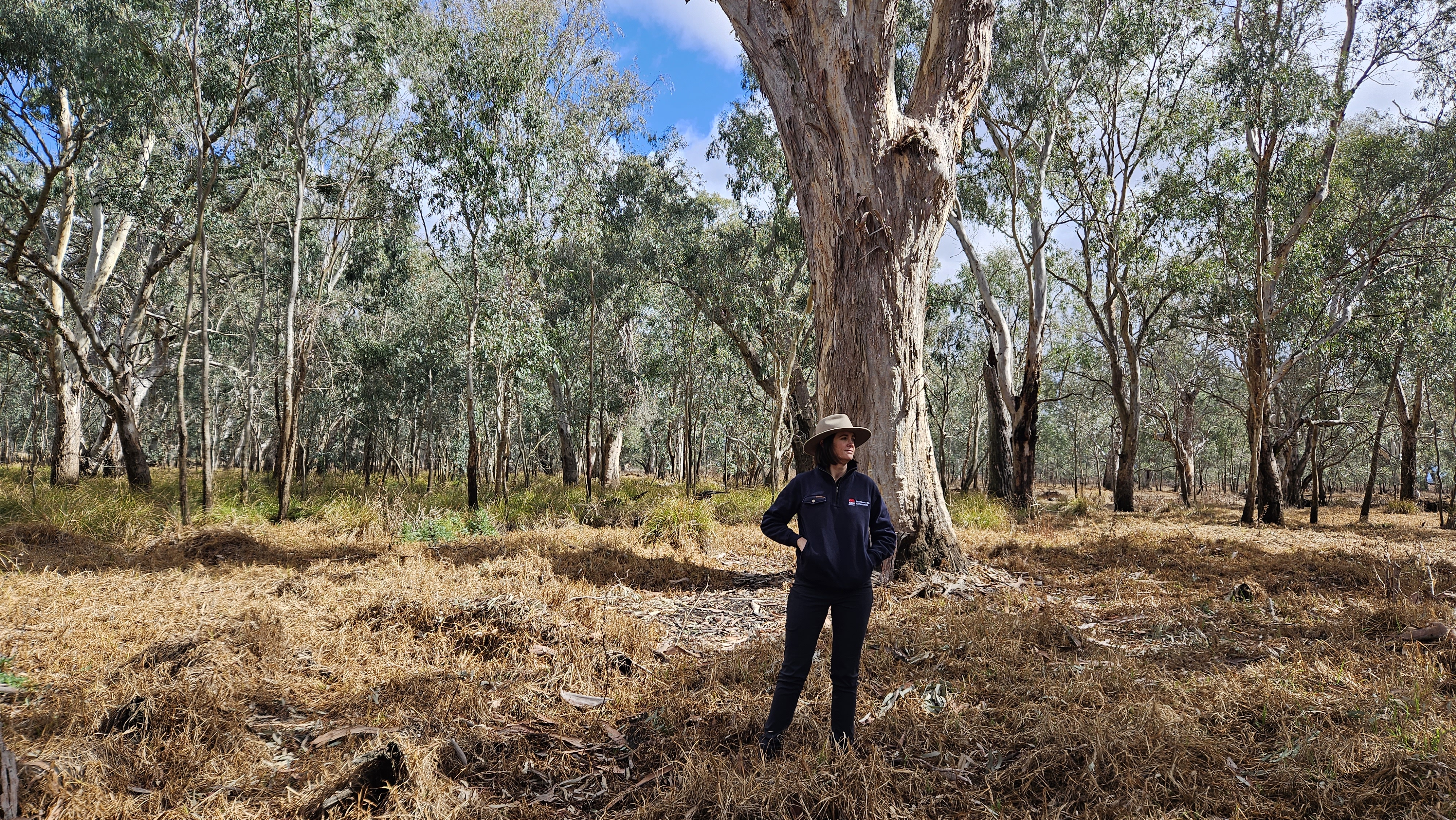About this case study
Biodiversity loss
Land and water managers, communities
Restore and Renew webtool
Twisting, towering River Red Gums once stretched across 20,000 hectares of the Hunter Valley. Today, only fragments remain.
"Given the vast clearing of River Red Gums, we are left with few places to collect seed. With new science and new tools, we can work out where to safely source seed so that we can rebuild stronger, more resilient ecosystems."
Dr Tricia Hogbin, Restoration Genomics Outreach Coordinator, Research Centre for Ecosystem Resilience
Eucalyptus camaldulensis were the guardians of the Hunter’s waterways, standing tall through millennia of droughts, floods and bushfires.
Land clearing, urbanisation, low genetic diversity and a changing climate have taken a heavy toll. Today, just 19 stands remain, covering at most 100 hectares. Fewer than 1,000 mature trees survive in the Hunter.
In recent decades, well-meaning restoration efforts have used ‘local’ plants, but given the extent of habitat loss, what’s left locally can lack genetic diversity.
“Genetic diversity enables populations to adapt to change, and without it, the trees we plant may not reproduce or may not be able to adapt to future climate conditions,” says Dr Tricia Hogbin, Restoration Genomics Outreach Coordinator with the Research Centre for Ecosystem Resilience (ReCER).
But new science and new tools are changing the story and giving communities confidence in the trees they plant and the forests they restore.
How the Restore and Renew webtool works
The Restore and Renew webtool was developed by ReCER and the NSW Government, and applies genomic data and analysis to guide seed sourcing for restoration projects.
According to Dr Tricia Hogbin, many restoration projects have relied on “local provenance” seed, sourced from the immediate area. But when seed is collected from heavily cleared areas or a small number of populations, restored plantings can have low genetic diversity. This reduces their ability to survive, reproduce and adapt to threats such as climate change and disease.
“Our preference for local seed was, at the time, a sensible generalisation that aimed to capture locally adapted genes and avoid mixing populations. But local conditions are not stable, and thanks to increased access to genetic data, we no longer need to generalise,” Tricia says.
Guarding the River Red Gum
In the Hunter, ReCER researchers found that River Red Gums are closely related to populations in the Namoi catchment further north in NSW.
They also found that hybridisation with other Red Gum species is common. Hybridisation happens when two closely related species interbreed and produce offspring that are a genetic mix of both. In nature, this can sometimes support healthy evolution. But if we don’t choose plantings with care, we can unintentionally increase hybridisation and cause problems.
When River Red Gums crossbreed with other Red Gum species, like Cabbage Gum (Eucalyptus amplifolia), the resulting trees may look similar but carry different genetic traits.
“Hybrids can ‘swamp’ the small number of pure River Red Gums that are left, making it harder to preserve the local species’ unique genetic identity and long-term resilience.”
To restore River Red Gum in the Hunter, seed should be carefully chosen from multiple sites across a genetic collection area to maximise genetic diversity. A genetic collection area, or genetic neighbourhood, is similar to the concept of ‘local provenance’, but is based on real genetic data rather than generalisations.
From data to action
Rather than sourcing seed from small, remnant stands of Hunter River Red Gums and risking low genetic diversity, the NSW Saving our Species program used the Restore and Renew webtool’s genomic guidelines to identify multiple sources, including ‘future climate matched’ sites further north.
"To restore River Red Gums in the Hunter catchment, we found we can safely source seed from much further away than we previously assumed. This allows us to maximise genetic diversity and climate readiness in our restoration plantings."
Katie Elsley, Senior Project Officer, Saving Our Species
This meant reaching into the Namoi catchment, where today’s climate reflects what the Hunter Valley is likely to experience in coming decades.
“By collecting seed from further afield, we can capture and restore genetic diversity that has been lost due to clearing and habitat fragmentation,” says Saving Our Species SOS Senior Project Officer Katie Elsley.
Plants grown from seed selected using this approach are nurtured by Trees In Newcastle nursery. In autumn 2025, the first generation of climate-ready River Red Gums were planted by teams from Muswellbrook Council, Broke Bulga Landcare, Hunter Local Land Services, private landholders and industry groups. This marks the beginning of a new chapter for an ancient species.
A tool for every restoration project
The Restore and Renew webtool is freely available, and easy to use and designed to empower community groups, councils, landholders and restoration practitioners across New South Wales.
It helps users choose where to source seed to maximise climate readiness and genetic diversity to restore resilient, self-sustaining ecosystems for the future.
"Restore and Renew gives people insight into the relationships among plant populations before clearing and can help restore populations that will still be standing in generations to come,” Tricia says.
The new generation of River Red Gums taking root in the Hunter will carry the genetic strength of centuries and the resilience to face whatever the future brings.
Case studies

The Yass Area Network of Landcare Groups is is using the Restore and Renew webtool to guide seed selection for their Climate Ready Revegetation Project.

A community-led exhibition in Lismore challenged human-centred worldviews and revealed how Indigenous Knowledges can guide climate adaptation in profoundly different and powerful ways.

When a eucalypt tree can live for hundreds of years, revegetation programs must look far into the future due to Australia’s rapidly changing climate.
